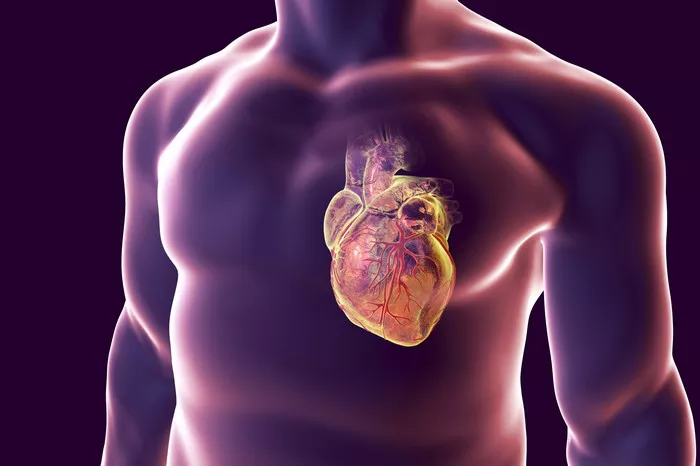The heart is an extraordinary organ, capable of pumping life-sustaining blood throughout the body without rest over a lifetime. However, like any complex system, it is prone to certain malfunctions, including atrial flutter. This condition, characterized by a rapid but regular heartbeat, can significantly impact an individual’s health and quality of life. The electrocardiogram (ECG) is a pivotal tool in diagnosing cardiac irregularities, including atrial flutter. This article delves into the intricacies of atrial flutter, its representation on an ECG, and the significance of this diagnostic method in managing the condition.
Understanding Atrial Flutter: A Cardiac Overview
Atrial flutter is a type of supraventricular tachycardia that occurs in the atria of the heart. It is characterized by a rapid but regular rhythm, typically around 300 beats per minute, but due to the heart’s physiological response, the ventricular rate is usually halved. The condition arises from a reentrant circuit, usually in the right atrium, leading to a loop of electrical impulse that circulates rapidly, overriding the heart’s normal rhythm.
The Electrocardiogram (ECG): Unveiling the Heart’s Electrical Activity
An ECG is a non-invasive test that records the electrical activity of the heart. It provides invaluable insights into the heart’s rhythm, rate, and the presence of any abnormalities. By placing electrodes on the skin, the ECG captures electrical signals from the heart and translates them into waveforms displayed on a monitor or printed on paper.
Deciphering the ECG: Indicators of Atrial Flutter
Atrial flutter presents distinct features on an ECG, making it a critical tool for diagnosis. Key indicators include:
1. Sawtooth Pattern: The hallmark of atrial flutter on an ECG is the “sawtooth” or “picket fence” appearance, characterized by rapid, regular atrial waves called F waves.
2. Atrial Rate: The atrial rate in flutter is typically around 300 bpm, but this can vary slightly. The pattern is more organized than that seen in atrial fibrillation.
3. Ventricular Response: The ventricular rate (the rate at which the ventricles contract) often exhibits a regular rhythm, especially if the atrial flutter is conducted with a fixed block (e.g., 2:1, 3:1), leading to a predictable ventricular response.
Diagnostic Challenges and Considerations
While ECG is an effective tool for diagnosing atrial flutter, several factors can complicate the interpretation. Variations in the flutter wave morphology, coexisting cardiac conditions, and the quality of the ECG tracing can affect the accuracy of the diagnosis. Advanced techniques and experienced clinicians are sometimes necessary to differentiate atrial flutter from other tachycardias.
Clinical Implications of Diagnosing Atrial Flutter through ECG
The identification of atrial flutter on an ECG has significant clinical implications. It guides the therapeutic approach, which may include pharmacological management, electrical cardioversion, or catheter ablation. Early and accurate diagnosis is crucial for preventing complications such as stroke and heart failure.
Therapeutic Interventions and Management Strategies
Upon diagnosing atrial flutter, the focus shifts to managing the condition. Treatment strategies aim to control the heart rate, restore normal rhythm, and prevent stroke. Options include antiarrhythmic drugs, anticoagulation therapy, and procedural interventions like catheter ablation, which targets the area of the heart generating the abnormal rhythm.
The Role of ECG in Ongoing Management and Monitoring
Beyond diagnosis, ECG plays a vital role in the ongoing management and monitoring of patients with atrial flutter. Regular ECG assessments help evaluate the effectiveness of treatment, monitor for recurrence, and guide adjustments in therapeutic strategies.
Future Directions: Technological Advances and Clinical Research
The future of diagnosing and managing atrial flutter looks promising, with advances in ECG technology and clinical research. Wearable ECG devices and telehealth platforms are expanding the possibilities for remote monitoring and early detection of arrhythmias. Ongoing research into the underlying mechanisms of atrial flutter and the development of novel therapies offers hope for more effective and personalized treatment options.
Conclusion
Atrial flutter, with its distinct ECG signature, presents both a challenge and an opportunity for healthcare professionals. Understanding the nuances of its appearance on an ECG is essential for accurate diagnosis, effective treatment, and improved patient outcomes. As technology and research continue to advance, the potential for enhancing the care of individuals with atrial flutter is immense, underscoring the enduring value of the ECG as a cornerstone of cardiovascular diagnosis and management.

